The landscapes, traditions, gastronomic specialties and hospitality of Romanian people are recognized everywhere, the beauty of their country being found in simple things.
While most tourists opt for holidays in Italy, Spain, Greece or Bulgaria, some enjoy the unique places in Romania. Romania has beautiful places, each with its history and mysteries, tens of places worth to be discovered by as many tourists. If you have free time and you want to spend it in a place full of tradition and history you must visit Romania.
Bucharest Sightseeing
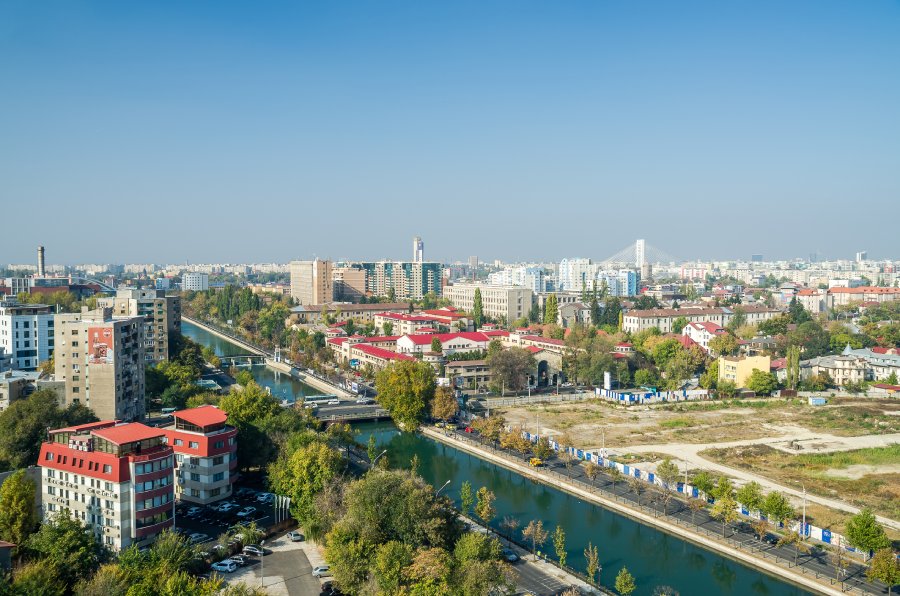
Bucharest is largest capital in Romania and was first mentioned in documents on September 20, 1459. Besides being an administrative and economic center, it is also the starting point for the tourist destinations in Romania.
The French influences on culture and architecture brought to Bucharest the surnames of "Little Paris". Bucharest has an important number of tourist attractions and monuments, such as Parliament Palace or Arc de Triomphe.
Parliament House
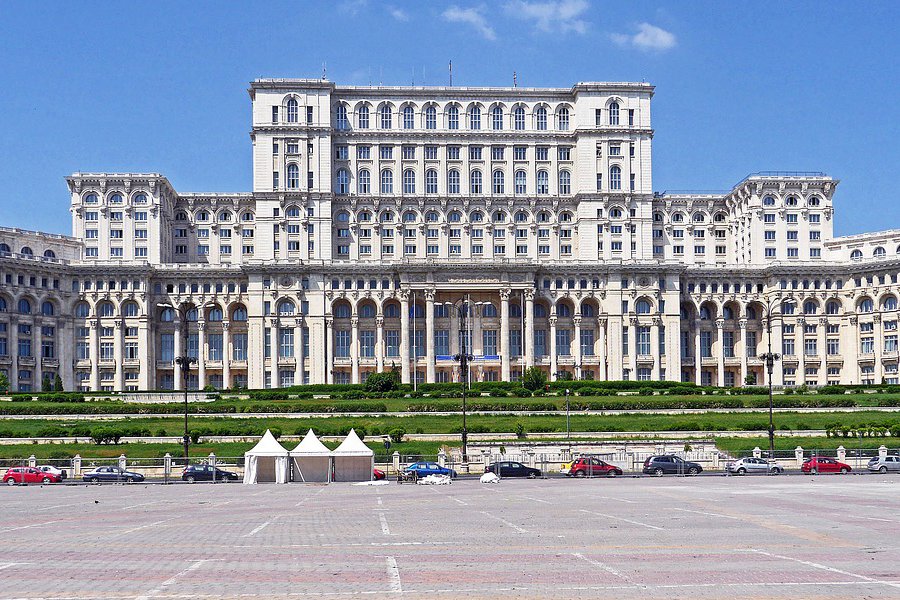
The Parliament Palace was created in the days of Nicolae Ceausescu. The dictator’s tendency was, on the one hand, to concentrate all the central organs of the state in one building, and on the other, Ceausescu wanted a seismically safe home that would withstand a possible nuclear attack.
Urban legends say the Parliament Palace is haunted by the ghosts that appear at night on the corridors of the largest construction in Europe, break the seals, whistle or shake the security systems. Starting from the nightclub’s story, legends say these ghosts have begun to feel their presence about 10 years ago.
The bases of parliamentarism in the Romanian Principalities were laid down by the Organic Regulations – adopted in 1831 in Muntenia and 1832 in Moldova – regulations which introduced modern rules of state organization and devoted, in a first form, the principle of the separation of powers in the state.
It is said that the ceiling in the Unirii hall should have opened so that the presidential helicopter could land in the hall.
National Village Museum “Dimitrie Gusti”
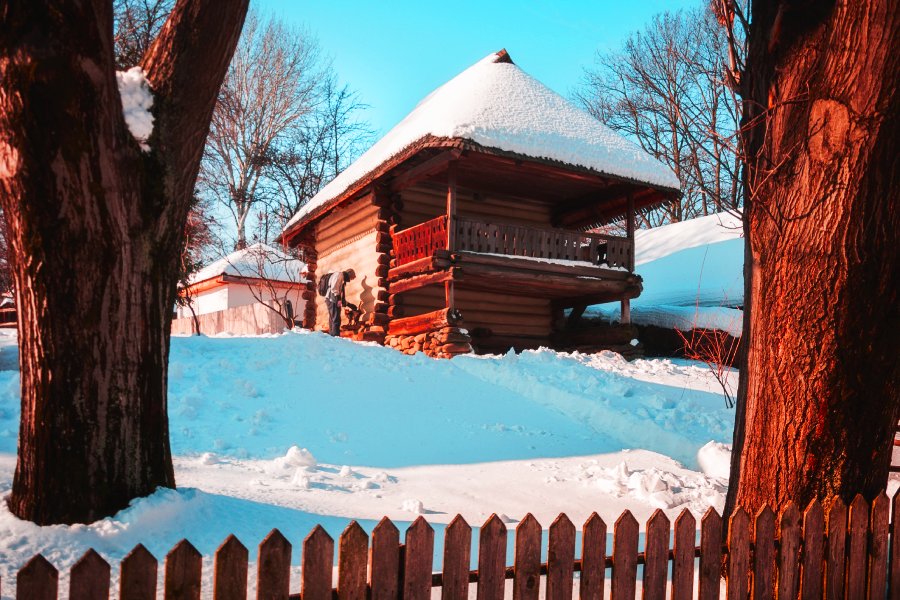
The National Museum of the “Dimitrie Gusti” National Museum, beyond the exceptional patrimony of the permanent exhibition of vernacular architecture, always brings in the evidence of the popular creation, illustrated with the help of anonymous peasants, folk craftsmen, who through the traditional technique and tools specific to the genre of creation which he represents, demonstrates how to become objects of the past.
Besides the permanent exhibition, the National Museum of Village “Dimitrie Gusti” offers to the public and temporary exhibitions made in partnership with museums, and prestigious cultural institutions.
Old Centre
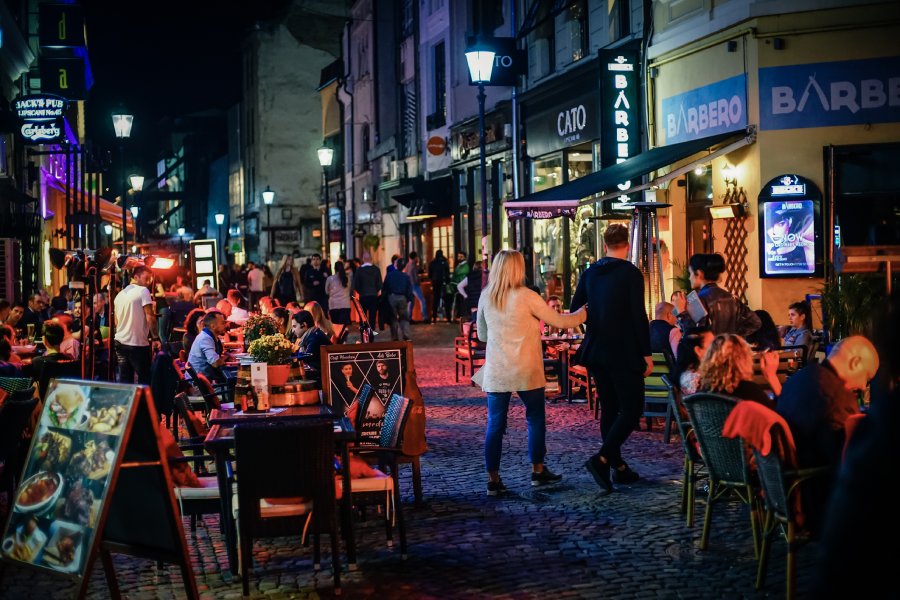
The current Old Center of Bucharest, or the Historic Center as it is said, draws its origins around 1600 when the first inns and shops were opened in the area of the Princely Court. The further development of the area was due to the concentration of political and economic power in Bucharest when after 1660 it became the unique capital of Wallachia.
The period of maximum flowering was recorded in Constantin Brancoveanu’s time when the Voivodal Palace and the surrounding buildings gained new features. The current French street is the oldest street in Bucharest, in 1692 it is paved with oak beams. At that time the area was frequented by merchants who brought their goods from Leipzig, Germany or Gabrovo, Bulgaria. Hence the names of the streets of Lipscani and Gabroveni.
Revolution Square
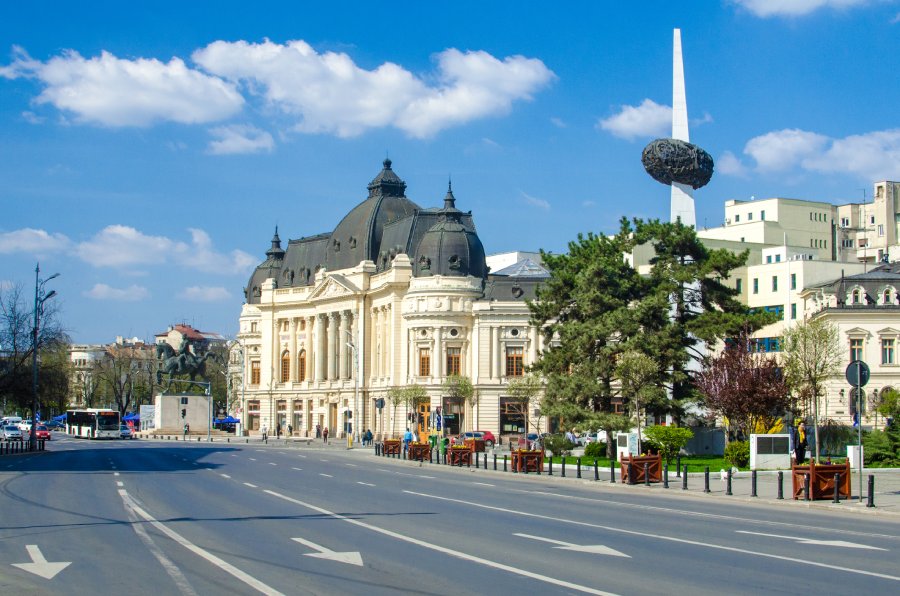
What is to be remembered is that the Revolution Square is a tourist destination that should not be omitted because, as it is mentioned, it is representative of the cultural and historical identity of Bucharest and of the whole country alike.
The Revolution Square, formerly the Palace Square, is also an excellent starting point for those who want to go through a comprehensive touristic circuit of Bucharest, as the market is located on Calea Victoriei and, for example, a short distance from Cismigiu Park located about 200 meters west of the market).
Arch Of Triumph
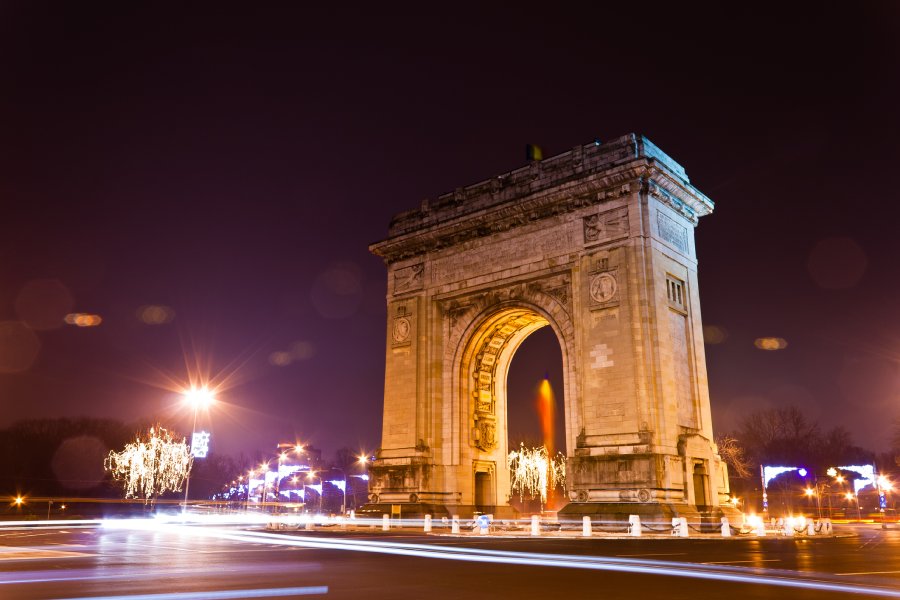
Historical Monument of Architecture and Cultural Heritage, Arc de Triomphe commemorates the victory of the Romanian Armed Forces in the First World War, the Great Union of 1918 and the crowning of King Ferdinand I and Queen Mary. Inaugurated in 1936 and consolidated, restored and preserved since 2014, the Arch of Triumph is re-inaugurated on December 1, 2016, on the occasion of the National Day of Romania’s military parade.
The monument was built in the classical style of the Paris Arc de Triomphe, the granite of Deva, and the stucco bas-reliefs were replaced with some definitive marble by Ruşchita, and the inauguration took place on 1 December 1936.
Mogosoaia Palace
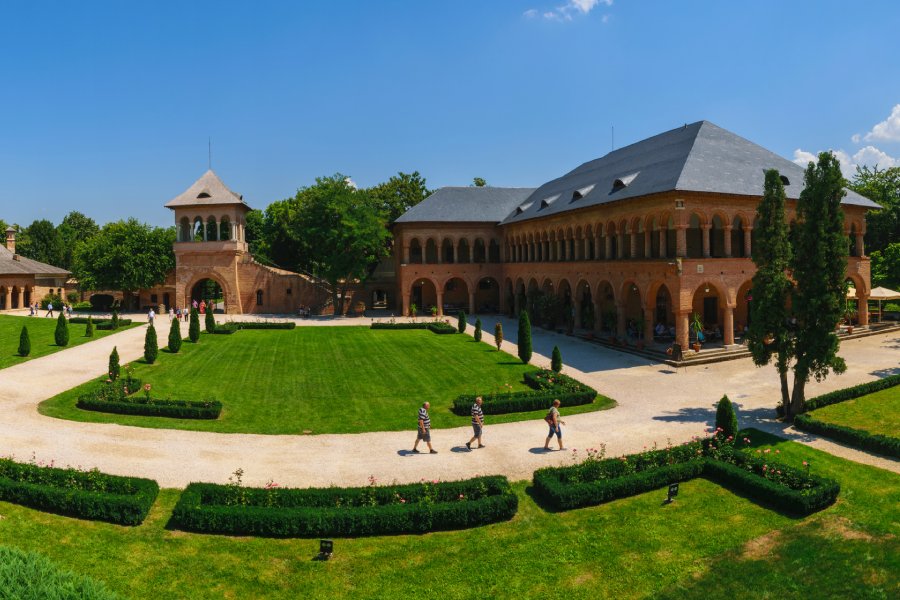
The palace is in a very good condition, refurbished and cared for as should all buildings – monument. Perhaps that is why it attracts many tourists; if during the week you can enjoy as an egoist of all the beauty of the ensemble, at the weekend you have to prepare to share the joy with the dozens of tourists who knock at his gate. One of the reasons is that there are only 15 kilometers from Bucharest to Brancoven Palace in Mogosoaia, Ilfov County, which you can easily walk through even if you do not have a personal car.
With an elegance that you feel at first glance, Mogosoaia Palace has something in the air of an old worship place, which invites you to meditation and relaxation. The building was built by Constantin Brancoveanu on the left bank of the Colentina river in 1702, which he later offered to his son, Stefan. This explains the architectural style-brancene-of the palace, combined with Renaissance, Oriental, and Baroque elements. The red color of the brick with which the whole complex is plated, along with the green of the park and the color of the flowers give it a special charm.
Snagov Monastery
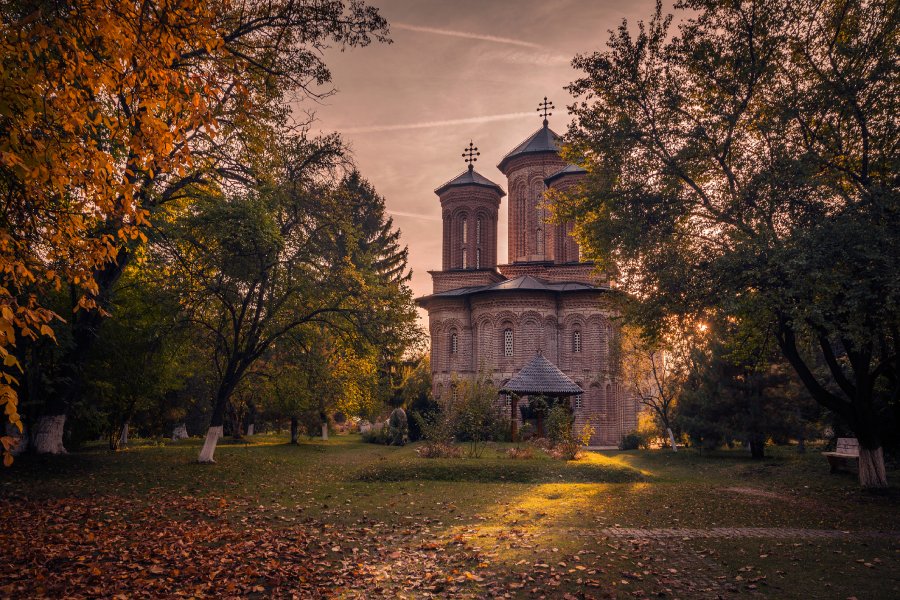
Snagov Monastery is an ancient Orthodox monastery, located 45 km north of Bucharest, on an island of Snagov Lake. The monastic ensemble on the island of Snagov was an important spiritual and cultural center of the Romanian country in the feudal age. The great church of the monastery has three monuments, as follows: Entrance to the Church of the Holy Mother (initially the patron, November 21), Saint Voivode Neagoe Basarab (founder of the present church, September 26) and Saint Antim Ivireanu (abbot of the monastery, September 27).
Initially, the island’s monastic ensemble, built up of brick, was surrounded by strong defense walls, guarded by a high observation tower and guard, serving at the same time as a bell tower. Of the old buildings, today only the great church, the bell tower, a fountain and a series of ruins, cellars, and prisons are preserved.
The Snagov Monastery served, for a while, as a state prison for boyars. Being surrounded by frequent and dark rainforests and forests, the island made difficult and very rare escapes. The monastery was also surrounded by strong walls, watched by a tower that served as a bell tower.
Around the monastic settlement on Snagov Island around 1485, Prince Vlad Tepes has the construction of a defense wall, a bridge, a prison for traitors and robbers and a tunnel under the water.
So if you want to spend your vacation in a unique place where you will stay with unique memories you should visit Bucharest sightseeing. Maybe you just want a day trips from Bucharest or maybe you want to see Bucharest at night so do not hesitate and make the move.
Transfagarasan, A Unique Road
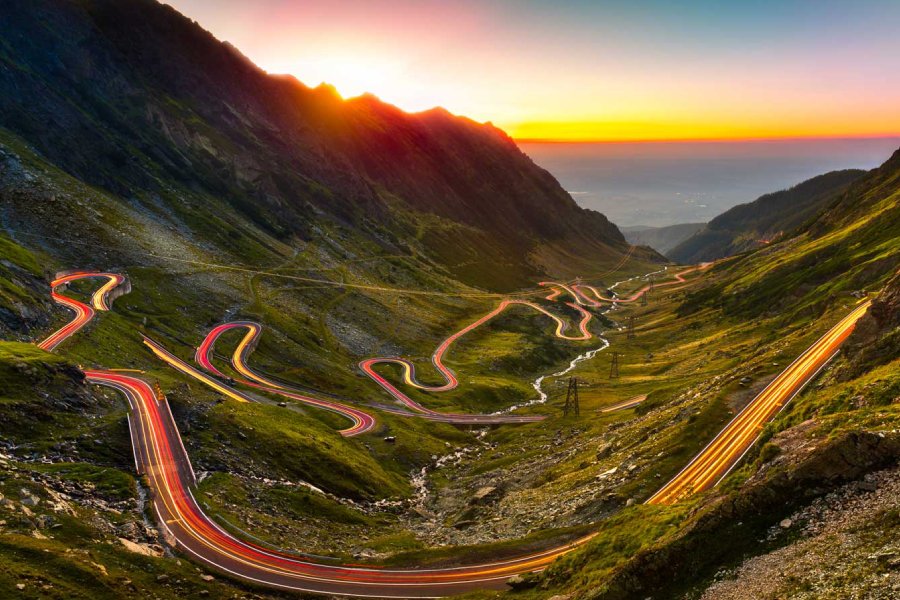
The fascinating road built over the Fagaras Mountains group, Transfagarasan is one of the biggest attractions of Romania and not only attracting tourists from all over the world. Situated in the mountains that host the highest peak in the country, Moldoveanu, where the altitude is 2544 meters, the Transfagarasan, with its stunning serpentines, form a unique landscape where nature can be surprised in the most spectacular scenes.
Basically, the Transfagarasan route starts from Bascov and ends in Cartisoara. Cross 151 kilometers and is also known as DN7C, but also under the name “the road from the clouds” due to the clouds that often cover it. Transfagarasan is also the link between Muntenia and Transylvania.
The idea of building this road was Nicolae Ceausescu, who wanted a strategic route through Fagarasi. The construction began in 1970 and lasted for 4 years, during which extraordinary efforts were made to complete the project. Due to unfavorable conditions, 40 people died during the construction of Transfagarasan. These are the official data. But the witnesses of those times claim that more than 400 people died while working on this road.
Vidraru Dam
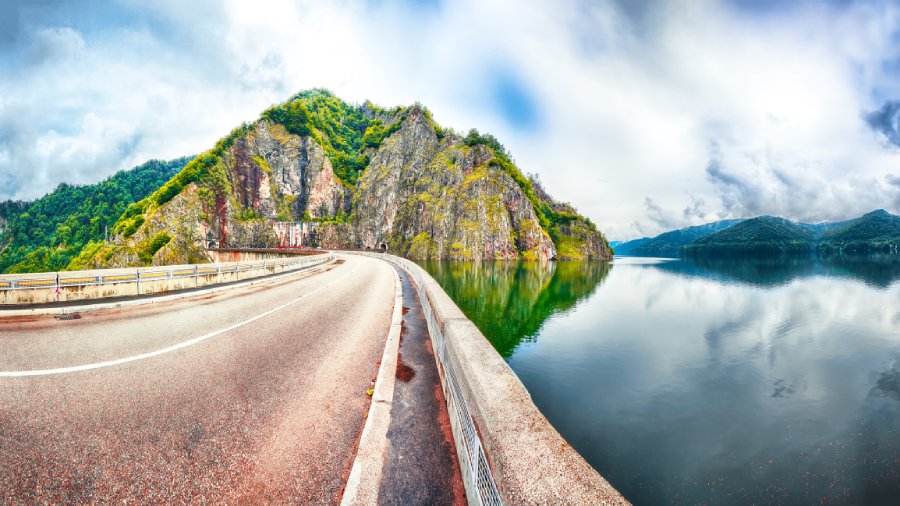
Along Transfagarasan, 40 km away from Curtea de Arges, between the slopes of Pleasa and Vidraru, there is Vidraru Lake and Dam – built between 1960 and 1966, for the production of electricity, irrigation and flood prevention, being now an excellent place and for recreation, tourism and sports, such as the extreme sport of Bungee jumping.
The dam was at the finish date, measured at height, on the 8th place in Europe and on the 20th place in the world. Thousands of people have drifted underground 42-kilometer galleries, one million cubic meters of underground rock, one million cubic meters of concrete poured, and human sacrifices cost over eighty lives.
You can reach the dam on the eastern bank of the lake, on the way to Balea, and from the end, to the left you reach the Cumpana depression. The view of Belvedere is unforgettable, being a point of great tourist attraction.
Courtyard Of Arges
The former capital of the Romanian Country and the municipality of Arges County in Muntenia, Curtea de Arges still preserves the aura of a city where history is written, a city that has always won the place on the list of the most valuable treasures of the country. In Curtea de Arges, a city set 450 meters above sea level in a hilly depression, nature watches and protects these centuries-old legendary places. It is one of the richest places in Muntenia in terms of cultural-historical heritage, a beautiful city, a city waiting to tell the story of the travelers coming to discover it.
Curtea de Arges is one of those cities where you can spend a few days strolling on the streets without regretting the moment. In order to be able to see in one day everything that the city has to offer, the tourist attractions must be carefully marked on the map to establish a route that allows visiting as many of them as possible in a relatively short time.
Curtea De Arges Monastery Church
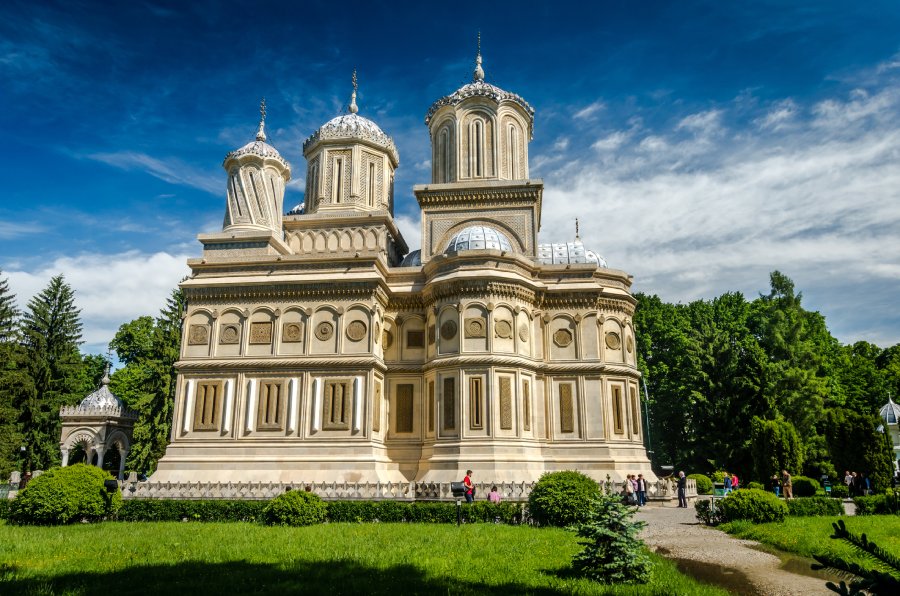
Curtea de Arges Monastery Church built between 1512 and 1517 by Neagoe Basarab is a legend, pilgrimage, cultural-historical center and royal necropolis that houses the tombs of Carol I and Elizabeth, Carol II, Ferdinand and Maria.
The legend of Manole, one of the Romanian myths, has become one of the most important myths of the 16th century. The legend spread all over the world annually brings an impressive number of tourists eager to discover the place where Ana, the beautiful wife of Manole, was built in the wall of the church.
The monastery dedicated to the Assumption of the Virgin is now a monastery of monks and is included on the list of historical monuments in Romania.
Just 100 meters away from the Monastery church is Manole’s Fountain, where the legend of the monastery and the craftsman to build his wife finds the tragic ending. Left on the walls of the monastery after it was completed in order not to build another more beautiful, the legend says that Manole built his shingle wings and the fountain appeared in the place where his flight was stolen. According to tradition, the 3 wells of the fountain flow in order for happiness, health, and luck.
Calimanesti
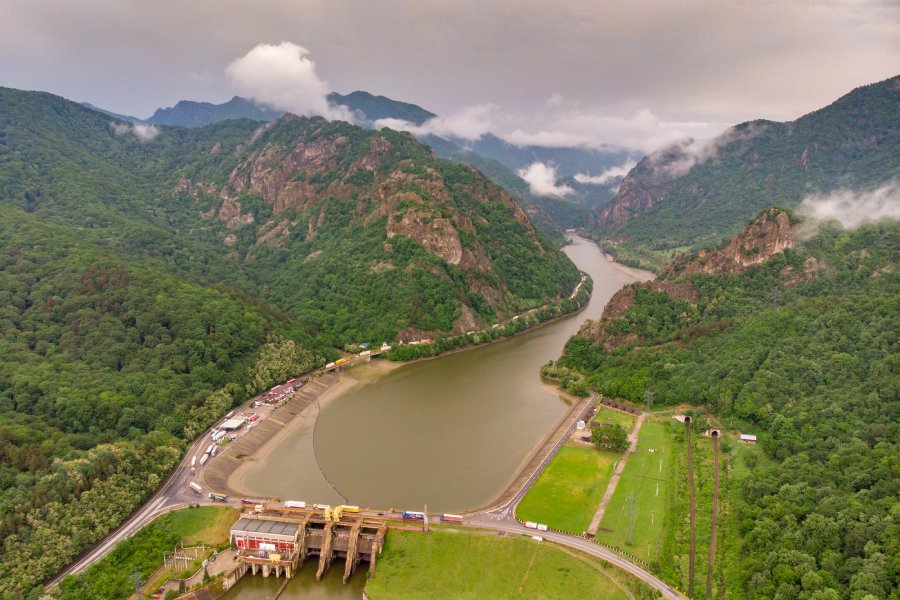
Calimanesti is located in the central-southern part of Romania, on the right bank of the Olt River, in the Jiblea-Calimanesti sub-Carpathian Depression, at an altitude of 260-280 m, 18 km away from Ramnicu Valcea Municipality (administrative center of Valcea County) population of 8.633 inhabitants. Together with the Caciulata resort, this resort forms the Calimanesti-Caciulata Resort, a resort open all year round.
The Calimanesti-Caciulata Resort is of particular importance through the mineral waters from the thermal and the thermal springs, through the beauty of the places, so the treatments made here are healing.
Here is a clinical section of the Institute of Physical Medicine, Balneology and Medical Recovery in Bucharest, the clinical base of the specialized department of the “Carol Davila” University of Medicine and Pharmacy in Bucharest.
Cozia Monastery
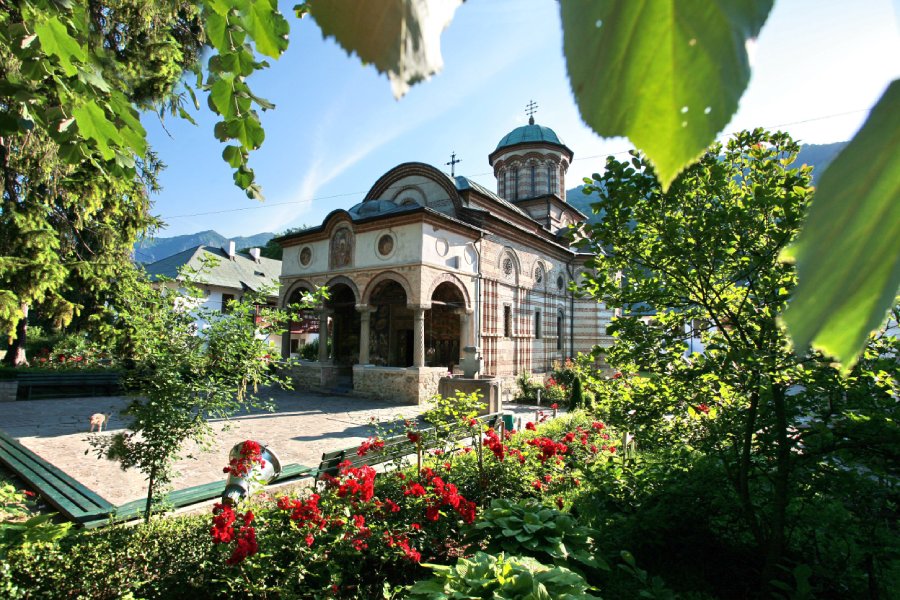
The Cozia Monastery, which has over six centuries guarded the Olt Valley, is on the national road Ramnicu Valcea – Sibiu, 22 km from Ramnicu Valcea and 75 km from Sibiu, on the right bank of the Olt River. It was built between 1387-1391 by the ruler Mircea the Old, at the request of Saint Nicodemus of Tismana, who was “the counselor of Mircea in the divine.” The great church, dedicated to the Holy Trinity, was sanctified on May 18, 1388.
The Cozia monastery was built between 1387-1388 by Mircea the Old, at the request of Saint Nicodim of Tismana, who was “the counselor of Mircea in the divine.” The great church, dedicated to the Holy Trinity, was sanctified on May 18, 1388.
The cross on the tower is from the time of Mircea the Elder. The church preserves the polycandras donated by Constantin Brancoveanu. In the narthex, there are the graves of voivode Mircea and the monastery of Theophany, the mother of Michael the Brave, the nun after the death of her son, died in 1605. The master’s funerary stone is a copy of the original and dates back to 1938.
Sibiu Sightseeing
At present, Sibiu is an important tourist and commercial center, a true tourist and cultural capital in the center of the country, still attracting its special charm, by tradition preserved so well, but also by a natural and historical décor. Sibiu passes European roads E 68 (Arad – Sibiu – Brasov) and E 81 (Cluj – Sibiu – Pitesti – Bucharest); Sibiu is an important railway junction and has an international airport with regular flights to Germany and Italy.
Sibiu is one of the most important cities in Transylvania with a remarkable potential for economic development, benefiting from its positioning on the Pan-European Corridor IV and benefiting from a modern International Airport.
The Old Center Of Sibiu
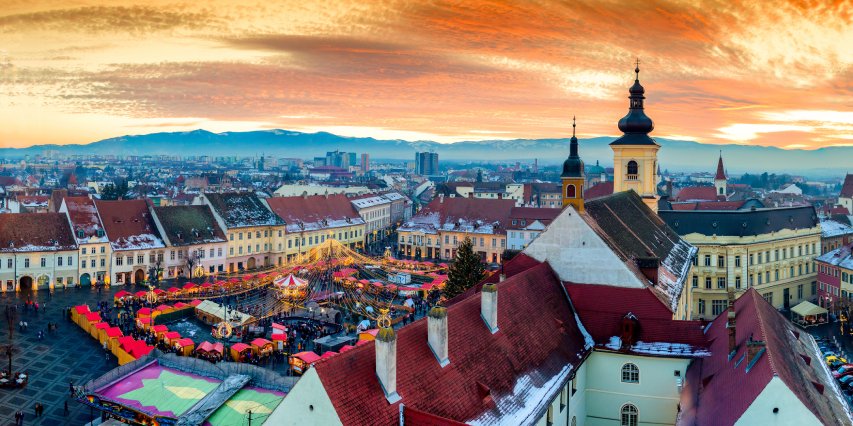
A bohemian place with enormous medieval streets, bordered by small houses or imposing buildings with large squares, observation towers and defense walls, the historical center of Sibiu is one of the most important tourist attractions in Romania.
The old center of Sibiu is only good for spending a romantic and quiet weekend, and even you are safe here, for, from the top, someone keeps an eye on yourself! You do not know who? Look only at the roofs and you will … eye in the eye with the windows of a special shape, looking silent and gallows when to heaven, when to passers-by!
And then, here in the Cindrel depression, you are also watched by the Fagaras Mountains, the Cindrel Mountains and the Lotru Mountains, all 25 km away and somewhat more massive and taller than you can find in the country!
Historic Center In Sibiu
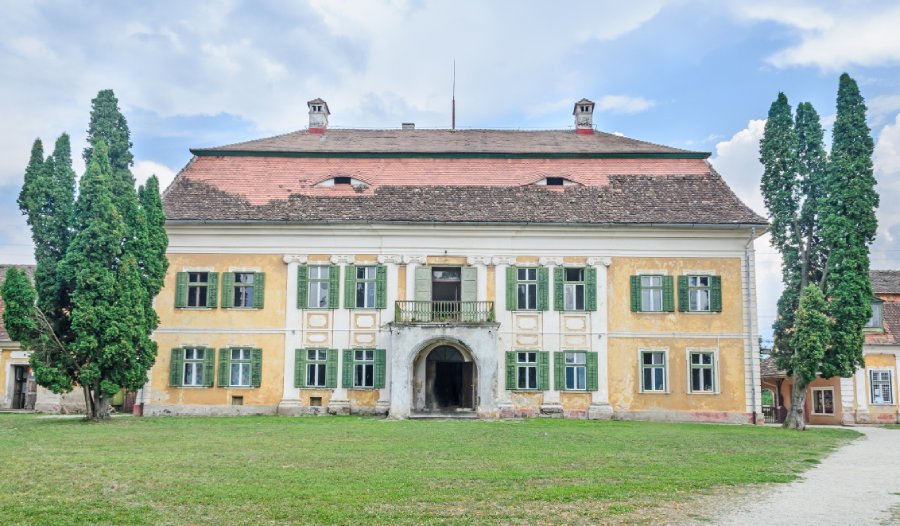
The historical center of Sibiu is one of the most visited areas of the city, being full of streets and monument buildings of major importance in the history of Sibiu. The most important tourist destinations are found at every step in the three major markets in the historic center.
Over the years in the Great Square were held civil gatherings, fairs, and executions, being first mentioned in 1411 as a granary pita. Pita Mare is surrounded by many old houses and palaces such as the Brukenthal Palace, the Blue House, the Haller House, the Hecht House, the Filek Palace, the Lutsch House and the Weidner-Ruessner-Czekelius house, and the Roman Catholic parochial church.
Small Square is the point of attraction of Sibiu, as well as the place of the most famous tourist attractions in the city. The Old Town Shopping Center is currently home to the Tower of the Council – over 700 years old, the Bridge of Lies – the first wrought iron bridge in Romania, the Hermes House – hosting the Franz Binder Museum, 16m long, the House The Arts, the Golden Stair Tower and the Pharmacy Museum.
All the buildings in Pita Huet are declared historical monuments, is a pita with a long history formed on the route of the first fortified enclosure of Sibiu. The most important tourist attractions are the Parochial House, the Stairs Tower, and the Brukenthal High School.
Village Of Sibiel
The village is part of the pastoral area of Sibiu County, recently crowned (2015) with the distinction of “European Destination of Excellence for Tourism and Gastronomy”. A picturesque village surrounded by wooded heights, a stone fortress hidden in the forest, a mysterious tunnel, a treasure, a story.
By far the most famous tourist destination of the village is the Museum of Glass Icons (with the largest collection of glass icons in Transylvania); thousands of tourists around the world have crossed the threshold.
We recommend hiking in the traditional orchards around the village of Sibiel. Here you will find the story of the local varieties of apple and pear trees over 100 years old, with valuable genetic wealth, both by old age and by diversity. Apples from Sibiel and Fântânele are a good opportunity to meet local producers and to taste the variety of varieties proposed.
The Holy Trinity Church
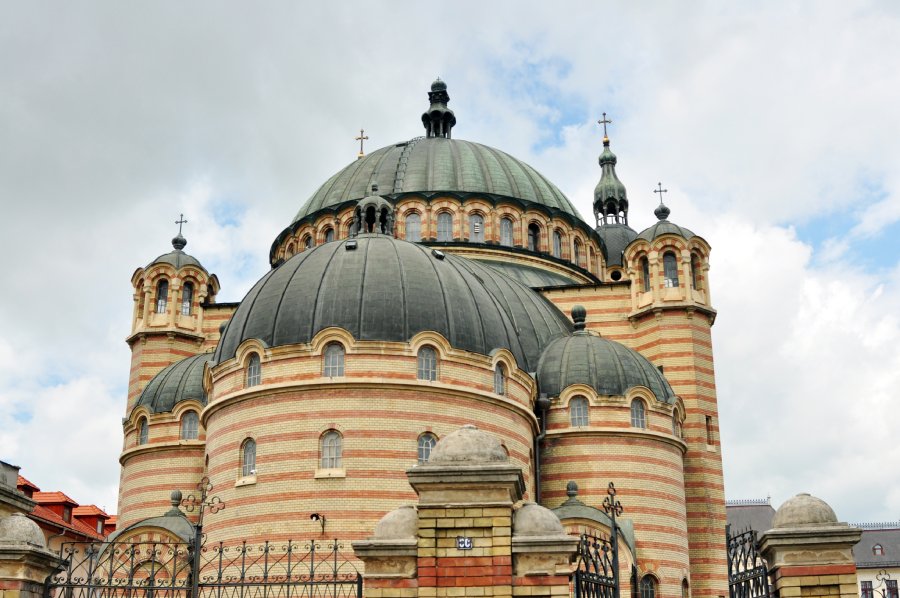
The church was erected in the mid-eighteenth century at a time when the Orthodox locals were oppressed by Austro-Hungarians and the Vienna Court’s desire to impose Greek-Catholicism.
In order to express their sufferings, the locals of Sibiel painted biblical scenes on the walls of the church where Romanian soldiers appeared in costumes in Austro-Hungarian military uniforms (unique in Sibiu).
The icons representing the 14 popes who led the Church of Rome before the Great Schism are the only ones. In the immediate vicinity of the church is the Museum of Icons on Glass.
The Fortified Church In Biertan
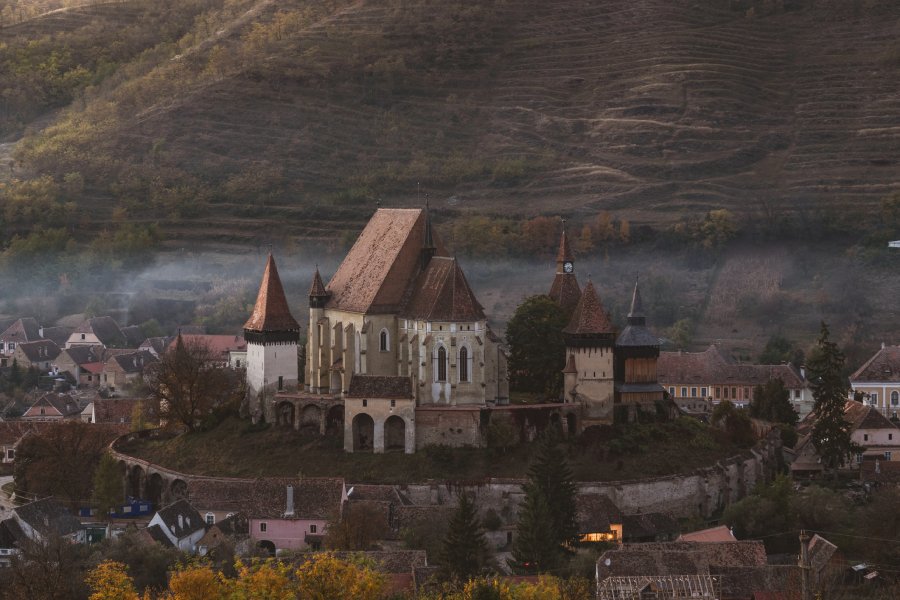
On a hill, in the center of Biertan, is one of the most imposing and well-fortified peasant fortresses in Transylvania. A true economic center of the area declared in the sixteenth century and the center of the Saxon Episcopate, the Biertan became a target coveted by many invaders. It needed a more imposing church surrounded by strong defense walls.
The church was built at the beginning of the 16th century as a late Gothic church. It has kept its appearance until nowadays, and the elements inside are invaluable values whose story goes centuries ago. As you enter the church, your eye will be taken by the imposing altar with the 28 painted scenes, the 16th-century pulpit, the flats made in flat relief, the Anatolian carpets and the impressive door of the sacristy.
The arrangement of the three enclosures surrounding the church, the 6 defense towers, and 3 bastions reveals such interesting things about the daily lives of the inhabitants. Access to the fortress is through a covered staircase that passes by the Watchtower (today a small bookstore is arranged here), and at the end of the stairs, there is a large stone in front of the church, which, long ago, all the villains were seated because the whole community to recognize it.
Traditional Food In Transylvania
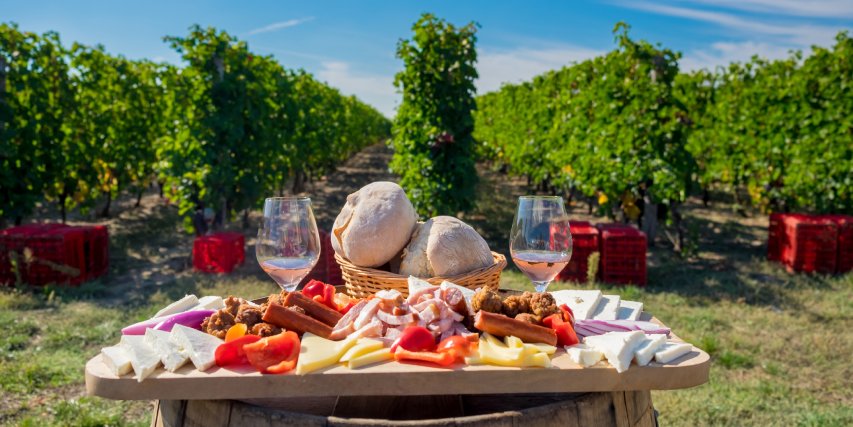
The Transylvanian cuisine boasts plenty of delicacies, but among the most important are the Transylvanian pork stew, the macelic brain, the facade bean, the rhubarb soup in Transylvania and the chicken broth with tarragon.
If you want to enjoy the most delicious traditional products in Transylvania, visit Transilvania Fest, a festival under the auspices of the Royal House of Romania and Prince Charles of Great Britain, which highlights the exact multiculturalism of the area. The fair is held every year at the end of September.
Nowhere in Romania can we find such a great variety of culinary delicacies, from soups and soups to pastries, peppers, puddings or chocolates, as in Transylvania.
Hunedoara A Place Full Of History
Located in the central part of the county with the same name, on the Cerna Valley, Hunedoara municipality is 19 km away from Deva. In its administrative territory are included the locality Racastie and the villages belonging to Zlasti, Bos, Gros, Hasdat and Pestisu Mare.
Relief is represented by piedmont hills and glaciers, with altitudes of 300,400 m, plus the Cerna Valley with wide meadows and well-expressed trails.
Following the conquest of Dacia by the Roman Empire, the Hunedoara area attracted the attention of the Roman world through its wealth, especially iron. This is illustrated by the traces found at Teliuc a “villa rustica” Sanpetru hill was a Roman fort in which to install a guard post of Legion XIII Gemina.
Traces have also been discovered near Castel and near the train station. Also, vestiges of this era exist in the villages of Cincis, Pestisul Mare where it was a vicus (Roman village), Manerau, Nandru, Ghelari, etc.
The Corvin Castle
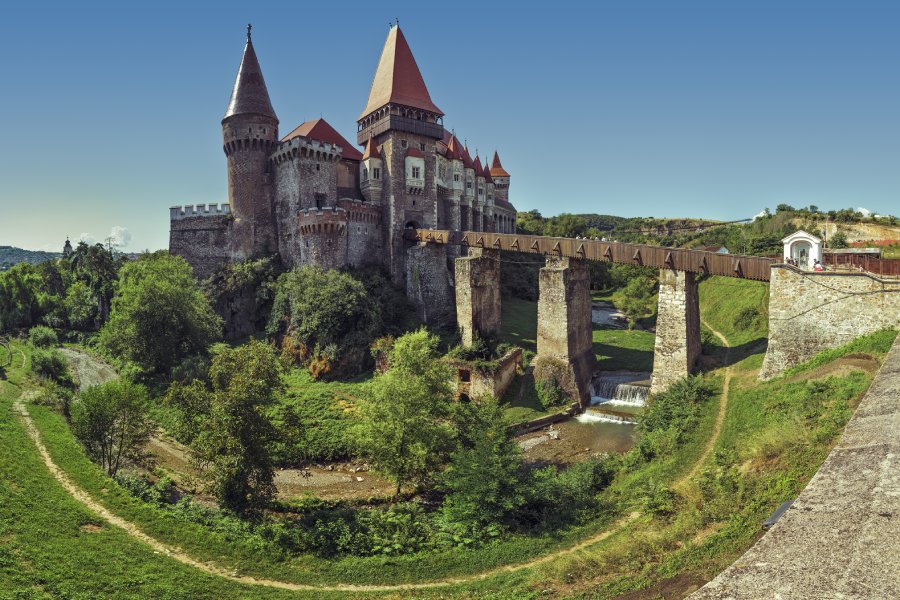
The Corvin Castle in Hunedoara has a history of more than six centuries and is currently one of the most visited monuments in Romania. Tourists from all corners of the world have crossed the threshold and have been impressed by the beauty and legends that circulate, but many of the fortresses’ secrets have remained unknown to the general public.
The Corvin Castle in Hunedoara is one of the emblematic monuments of Romania. In the literature or tourist guides, it also appears under the name of Huniazilor Castle.
According to historians, alongside its existence, the Corvinus Castle was filled with three large fires. The most consummate took place on 13 April 1854 at 23 o’clock, most likely caused by a stumbling block. The fire destroyed the shingle roof of the castle and the rest of the wooden structure, door frames, windows, beams of wooden ceilings, and wooden stairs that had previously prevailed in the castle.
There is a legend according to which Vlad the Impaler was kept in the prison of the Corvin Castle for seven years. The legend has perpetuated over time, becoming even the subject of reporting and documenting foreign journalists.
According to the Hunedoara historian Ioan Bodochi, the association of the Hunedoara castle with a haunted place comes from both the Romanian people’s beliefs, the immortal spirits, and the legends of the Hunedoara castle, a place with a tumultuous past. A horrible tale left in the history of the castle is the punishment of Ana, the noble wife Ioan Torok, who mastered the sixteenth century Corvinus Castle.
You Must See Alba Iulia
Alba Iulia is one of the most fascinating cities in Romania. A place full of history, a symbol of the unity of the Romanians, which should not be missed by any tourist arriving in Romania.
Scientists have not yet discovered how we can teleport. However, tourists arriving in Alba Iulia will realize that returning in time is possible. It’s true, an imaginary one. This is because the symbolic city of Romanian unity is rich in tourist sights that recall the troubled history of this people.
Alba Iulia is located in the western part of Romania, in the center of the Transylvanian Plateau, on the banks of the Mureş River. The city is the residence of Alba County, is considered one of the most interesting places in Romania.
Alba Iulia is located a stone’s throw away from the Dacian fortress of Apulum, which in the Roman era grew very much. In the Middle Ages, the city was named Slavonic in Balgrad, that is, the White Fortress.
One of the most important events taking place in Alba Iulia takes place on 1 November 1599, when Mihai Viteazul enters the city and realizes the political union of Transylvania and Wallachia. Unfortunately, after the death of Michael the Brave, Alba Iulia was destroyed several times by the rival armies, being restored over time.
Alba Iulia Fortress
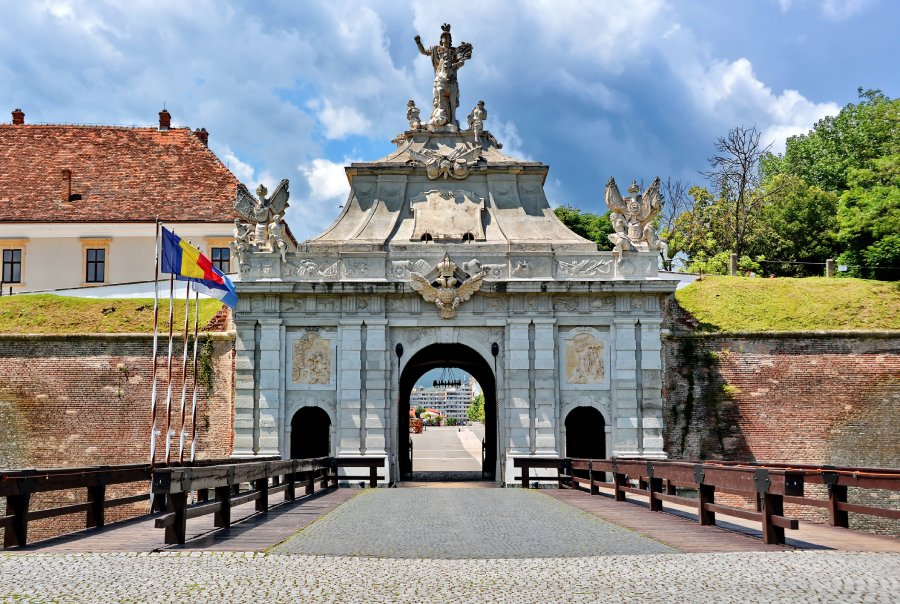
The bastion fortress in Alba Iulia has become in recent years the most important attraction of the city and one of the most famous in Romania. The construction of such a fortification required huge efforts, both from the human and financial point of view. On Nov. 5, 2015, exactly 300 years have passed since the foundation stone of the Citadel.
The foundation stone of the Citadel was laid on November 4, 1715. Broadly speaking, it is believed that the year of completion of the works is 1738, although there have been different works in the years to come.
The city built in the heart of Transylvania proved to be the most imposing Baroque monument of the province. A peculiarity of the Citadel is given by the succession of the six gates, located on the east-west axis. In other words, on the “Gates of the Fortress” Tourist Route, which connects the Civic Center with the Plateau of Romans, located in the western area of Alba Iulia.
The imposing fortress was named after Emperor Charles VI, during which he was raised, namely Carlsburg-Carol’s Fortress.
The role of the Fortress was military defense, given by the bastion system, the typology of the artillery pieces that it was endowed with, and the size of the existing troops inside it. The city was attacked once in its military existence but never conquered. The episode took place in 1849 when 8,000 Hungarian soldiers besieged it without success.
Sighisoara – A Wonderful Place
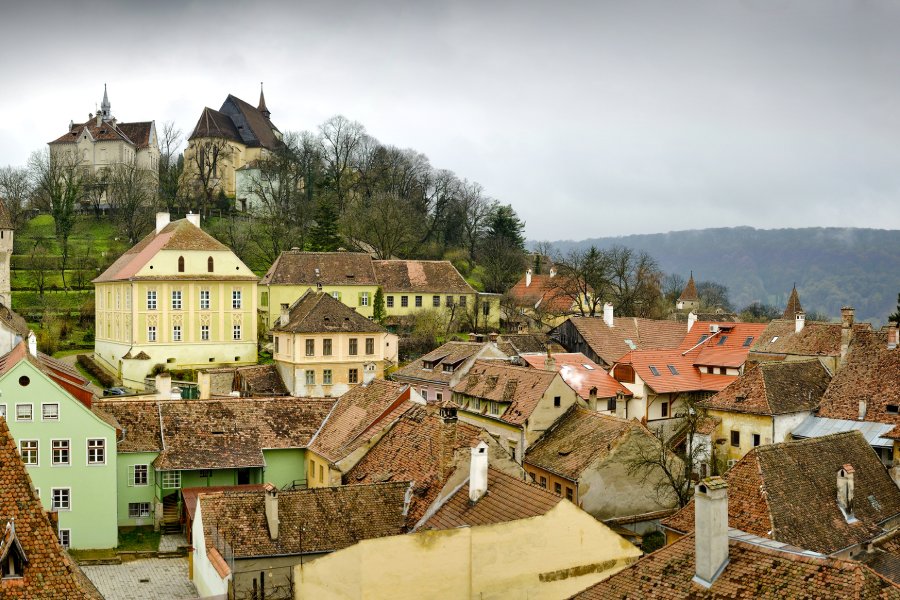
Hundreds of thousands of tourists from all corners of the world come to Sighisoara every year, a place full of history, beautiful and authentic stories.
Sighisoara is one of the few towns in Europe inhabited, and the only one preserved for the most part but also inhabited in Romania. Due to its remarkable architecture, dominant position and geographical ambiance, the city has been surnamed since the late 19th century “Pearl of Transylvania”.
Whoever gets to Sighisoara once, will want to come back again and again, without ever having the feeling that he has seen everything. It’s a city that you love at first glance and you wear it in your heart for all your life, a place where you sit in your mind and soul, in which you live or resurrect yourself, in which you remember who you are actually or discover a piece of “I”. It’s a place that you feel, even though there are thousands of people around you, flashing, hearing different languages. Sighisoara is a story about the soul, simply.
When you climb the stairs that lead to the city, stop and look at it in peace. He smiles at the sun and catches the Clock Tower in a picture. Stop at souvenir stalls, look patiently, and you’ll have the chance to find anything other than the famous magnets with Vlad Dracul and kitsch-bracelets. Surely you can find a nice salesman, as I have found, asking you, “Have you seen the city before? You know she’s so beautiful.”
The Historic Center Of Sighisoara
The historical center of Sighisoara was included in the World Heritage List in 1999 at the 23rd session of the World Heritage Committee.
Sighisoara is a remarkable testimony of the culture of the Transylvanian Saxons, a culture that is completed after 850 years of existence and will be perpetuated mainly by its architectural and urbanistic monuments.
The archaeological testimony confirms human existence and continuity in these lands from ancient times, here we find material traces dating from all historical periods, from the Neolithic to the Middle Ages, when in the second half of the 12th century it was founded the current city, during the arrival of the German settlers in Saxony (Saxony), who were granted certain rights and privileges. Thus, here, with the time (in the 13th century), was created a medieval craft of craftsmanship and commercial character, surrounded by defense walls.
The Clock Tower
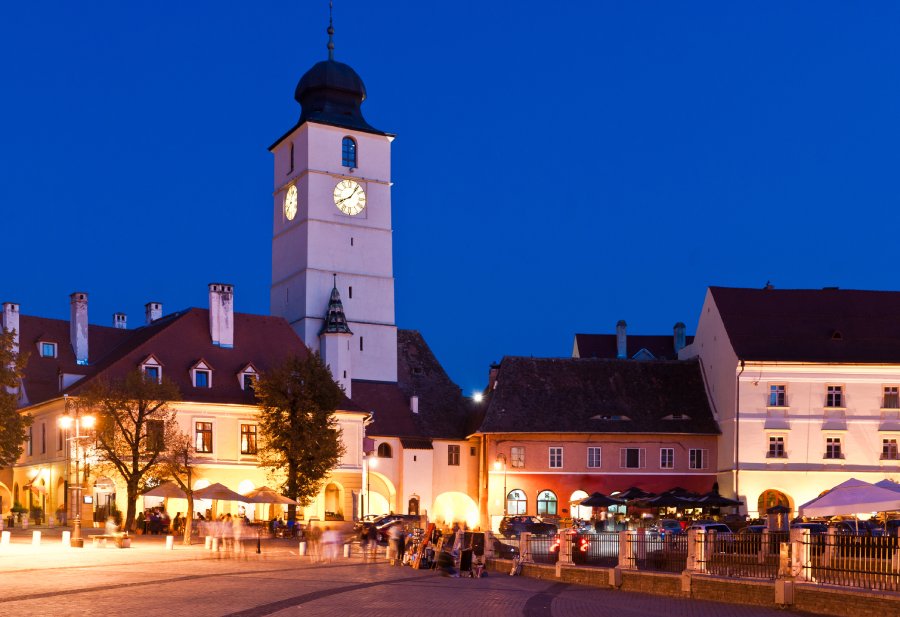
The clock tower, the largest tower of Sighisoara, with its 64 m, dates back to the 14th century. Its 2.3 m thick walls provided the necessary safety for ammunition, archives and treasury warehouses. The entrance to the fortress through the clock tower was well fortified and defended by three gates.
On the third floor there are the consoles, which go out of the wall with about 3 m, reinforce the impression of the tower. The fifth floor of the tower is retracted inwards by 1.40 m and is surrounded by an open balcony. Above the gallery can be seen four turrets that symbolized that the city had the right to trial. The 34m high roof, covered with tiled tiles, continues with two domes, a small globe of gold, and a meteorological pillar on top of which there is a roaring rooster in the wind. If I see it facing the west, the Sighisoara know it will rain.
The clock mechanism, originally made of wood, after the great fire in 1676 was replaced by a metallic one. In 1677 the tower was renovated, and wooden statuary groups appeared. The 0.80-meter figurines to the lower city are symbols of the days of the week, and to the city, peace, justice, and justice.
School Scale
This construction, the only one of its kind in Transylvania, was built in 1662 by Mayor Eisenburger, its purpose is to facilitate the students’ journey to the School of the Hill during the winter.
The staircase was made up of 300 steps protected by a roof, but in 1849 there were only 175 steps left behind.
The Hill Church In Sighisoara
The hill church in Sighisoara is an evangelical church that was built in several stages between 1345-1525. Worshiped by Saint Nicholas, she is at the top of the so-called “Hill of the School”
Considered the most valuable architectural monument in the city, [1] it is the fourth largest Gothic church in Transylvania and includes a Romanesque chapel and a quadruple donjon. It has a 42-meter-high bell tower that makes the rest of the building alien, which goes a little southward. It has the only crypt known in Transylvania underneath the choir and contains graves from the 16th-18th centuries.
It is the church where Gheorghe Rákóczi I was elected prince of Transylvania and king of Hungary in 1631.
Maramures – A Fairytale Place
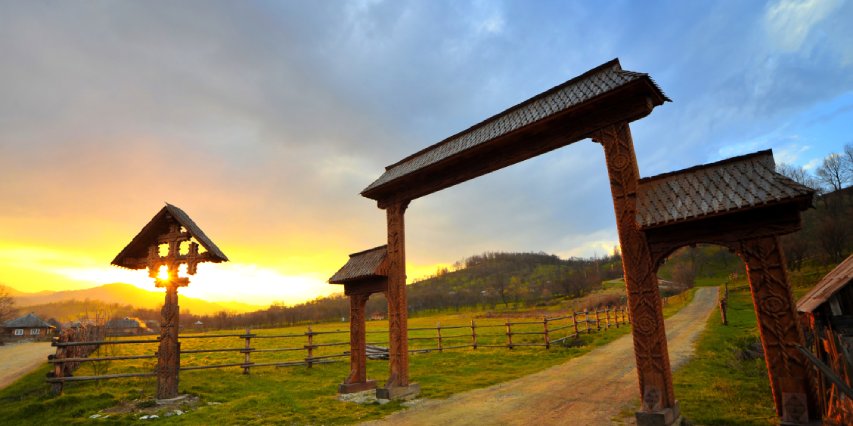
In order to discover all that the wonderful area of Maramures has to offer, its natural landscapes that are hard to describe in words and the rich historical heritage, it may take a whole life. For those who only have a weekend, a route through Maramures can mean the beginning of a beautiful sentimental connection with this area that calls for a return to traditions.
If you are a nature lover, you will surely love the mountain landscapes and valleys that leave you breathless. More than 30 protected natural areas, grassy meadows, full of grass during summer and snow in winter, mountains covered with evergreen forests, all mirrored in clear, crystal clear waters stretched across the region.
Regardless of the seasons you visit, these places have their magic and their special charm and you will find yourself in the middle of pure nature and dreams.
Generous nature offers great opportunities for peace and recreation. Those who like to explore, a long array of excursions can be made both on the valleys of the water and the mountains. Excursionists will be delighted to learn that Maramureş has a complex network of marked forest and marked paths that offer wonderful views of villages and incredible landscapes: small lakes, waterfalls, caves, nature reserves, rare fauna.
But Maramures does not just offer a geography lesson; culture and history are two of the main features that define this territory. There are many historical places, museums and memorials in this area. The region’s fame is due mainly to traditional architectural monuments, over 200, perfectly preserved to date. All this is for the inhabitants of everyday life: beautiful traditional houses, wonderful wooden gates, known all over the world, beautiful wooden churches with towers that seem to touch the sky.
Built centuries ago and decorated in the interior with extraordinary frescoes, wooden churches in this region are not just a museum: they are open to the public and the service is done regularly.
Their uniqueness and great value to these churches were recognized by one of the world’s most important authorities, UNESCO, which included eight of them in the International Heritage List.
The Wooden Churches In Maramures
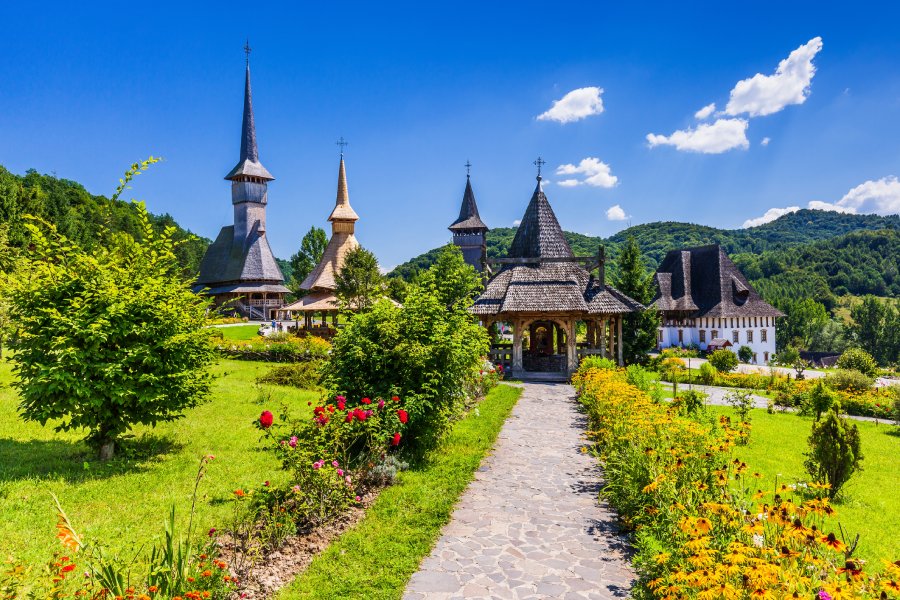
Eight wooden churches, masterpieces of the Maramures wood architecture, were included in the UNESCO World Heritage in 1999, bringing a remarkable Romanian contribution to the cultural treasure of humanity. These were considered to be the most beautiful wooden churches in Maramures, representative of the traditional architecture of the Land of Wood – as this area was known.
The wooden churches are dated between the 17th and the 18th centuries but, according to the specialists, they would represent older architectural styles with centuries. This is because in many cases the churches were raised to the same place where a church had been, the architectural form and the decorative details being preserved, and repairs or restorations were made gradually by replacing beams or shingles.
The Maramures wooden churches respect the unity of conception, the places of worship being built according to the same organization used throughout the medieval Romanian architecture. At the same time, the construction of the edifices respects the characteristics of the Orthodox cult.
The wooden churches in Maramures can be visited by tourists, the Church in Barsana being open daily between 9.00 and 17.00, while the other ones are open upon request. While some places of worship have set an entrance fee, others do not provide for the visiting fee, but in these situations the churches accept donations.
Breb Village
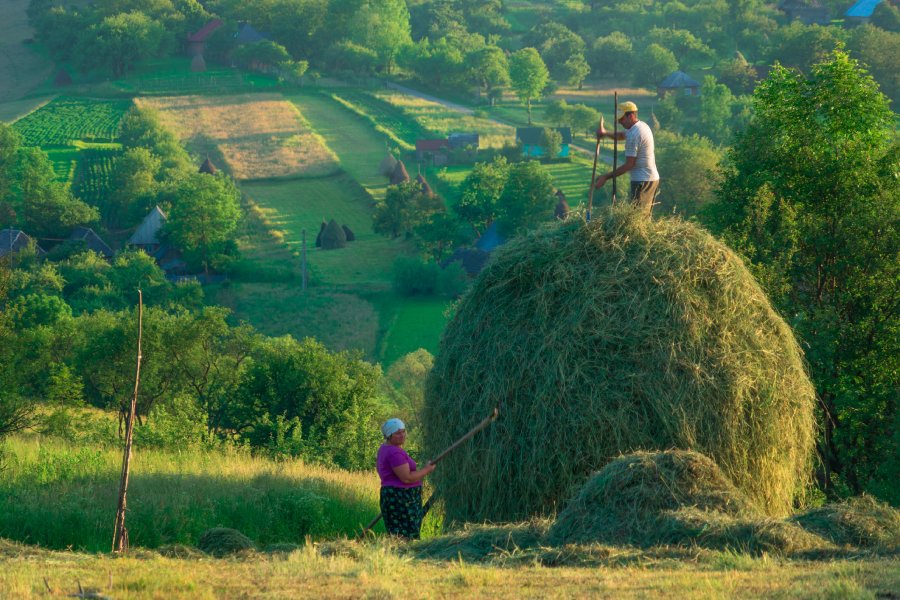
A small village in Maramures, but rich in unique traditions and customs in Romania, is one of the most appreciated tourist attractions in Romania. It is the village of Breb, whose rare beauty fascinated even Prince Charles, so he made the decision to buy here more traditional wooden houses.
Breb was included in the list of the most beautiful villages in Romania, being one of the most photographed places in the country. And no wonder if we think that tourists arriving in this picturesque place in Maramureş, especially during holidays, have the impression that they have come back in time.
The locals in the village of Maramures are firm: they do not want to give up the traditions even in the head. That is why on Sunday Sunday I put my popular wreaths and go to church service.
Why is Breb a magnet for tourists from all over the world? The answer is the simplicity of this typical Romanian village, where traditions did not die. In this locality of Maramures, the villagers see their affairs as hundreds of years ago. That is why there is no house without animals. Thus, tourists arriving in this little corner of heaven can learn how to mow the cow or gather eggs from the nest.
After finishing the work of the field, the women in the village began to weave, from carpets to shavings. If hikers are cold, they are served by locals with plum or plum horseradish at the mouth of the stove.
And if the tourists want to admire the surrounding areas, they can rent bicycles, which are ideal for walking along the Guthai Mountains.
The village of Breb has located 40 km from Baia Mare, near Ocna Şugatag. At the entrance to the locality, a Maramures gate meets the hikers.
Barsana Monastery
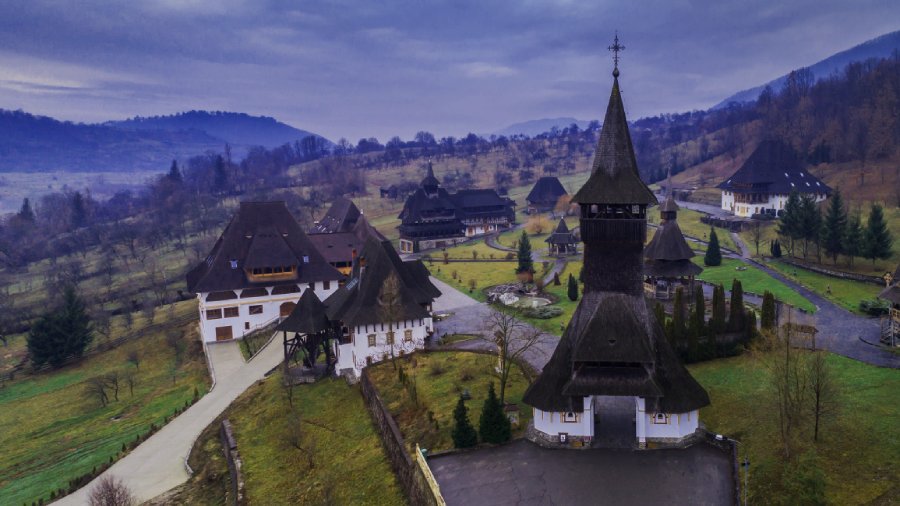
The Barsana Monastery is one of the reference objectives in Maramures. The reason is both the beautiful church inside the ensemble and the rest of the wooden buildings made by popular craftsmen from Maramures.
The church of the Barsana monastery is one of the highest wooden churches in Romania, with a height of 57 m. Also in Barsana, there is a second UNESCO World Heritage site.
The monastery complex is located in the village of Barsana. The village settlement is known for the first documentary attestation in 1326. At that time, the King of Hungary, Carol Robert of Anjou, issued a diploma which strengthened the possession rights for Barsana of Stanislau Barsan. He would receive the estate with the right of inheritance.
The old church in Barsana has a great cultural significance and is included in the list of UNESCO heritage buildings. This church is a valuable historical monument and expects it to be brought back to the former place and included in the current complex of the Bârsana Monastery.
The Romanian Peasant Museum
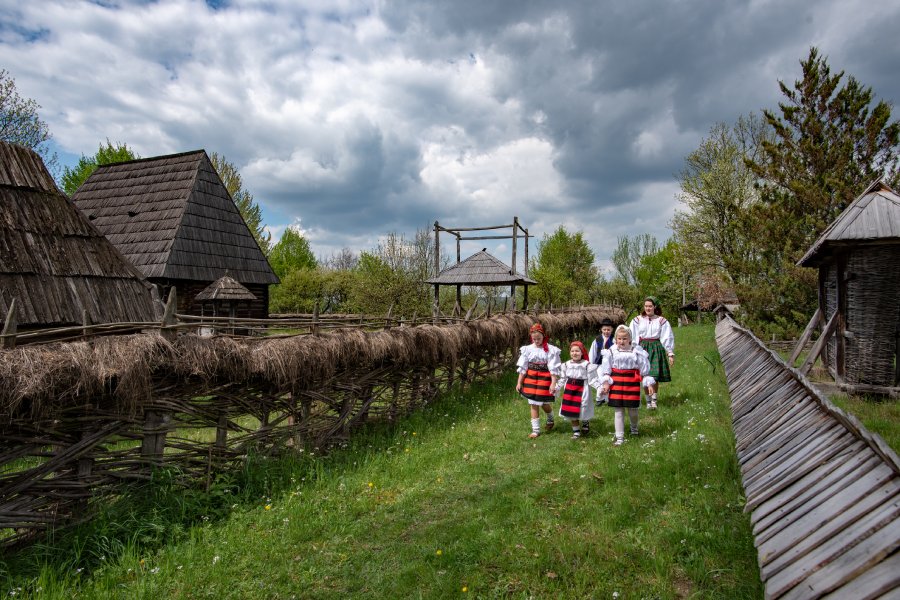
The museum is located in Dragomiresti and operates in a former peasant household and was set up with the desire to pay tribute to the woman for the important role she has in the development of human life. Here are exposed decorative elements and clothing, objects specific to the hemp cloth, linen, and wool, as well as other household objects and traditional tools.
The first museum in the country dedicated exclusively to the woman can be visited in one place in the country, in Dragomiresti in Maramures. Here you can understand and see all the occupation of the peasant from birth to the transition to the other world.
The charm of the unusual museum is typical of the place, both through the originality of the construction and the exhibits, but also by the authenticity of the guide who is also a woman, a peasant from the place. Her stories about the unique museum are not just learned stories to make visitors curious! There are life stories, and he said in the original morose voice
The Merry Cemetery
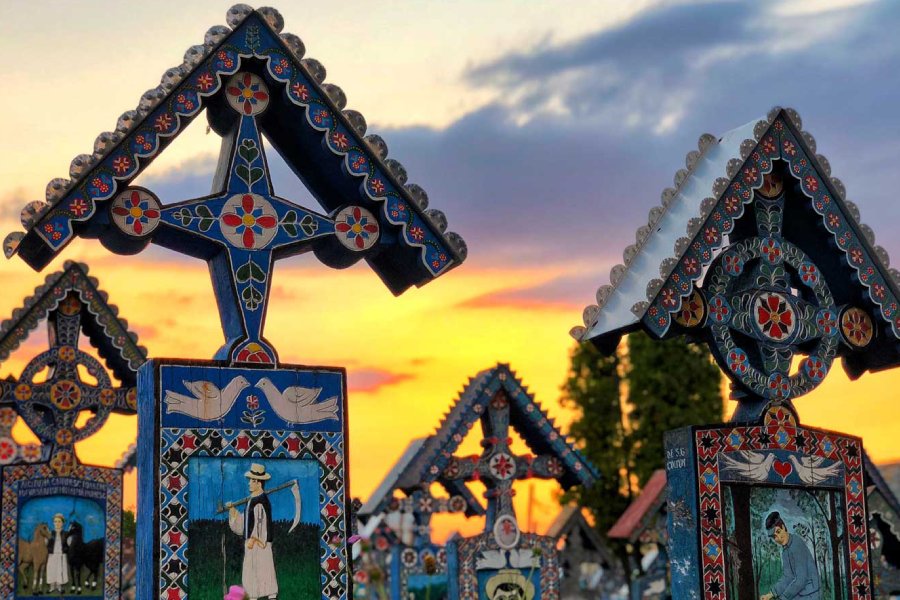
The Merry Cemetery from Sapanta – The art of wood on the territory of Romania has reached the most creative connotations of the highest quality, in the Maramures area.
In this closed space, surrounded by the Carpathians Mountains, a real civilization of wood has developed, which tried not only to provide a function of the created objects but also a special aesthetics. Probably the same thing happened to one of the Maramures masters, who left a real treasure – Ioan Stan Patras.
A sculptor of crosses and artist, he decided to go over the traditional approach to making a wooden cross. A simple, religious and fearful God, he understood that death is part of life. This has led him to no longer regard death with the rigidity we are used to.
It is assumed that the disheveled attitude of death was a Dacian custom. They believed in eternal life, death is for them only a passage into another world. They did not see death as a tragic end but as a chance to meet the Zamolxe god.
In many areas of Romania, after the traditional tradition, the separation from the dead is done by good will. The wand is considered the last party to which both the dead and those who left behind participate. Looking at things from this perspective, John Stan Patras tried to translate into his works, the essence of the deceased’s life, in a cheerful way that would make a man look at death more easily.
Voronet Monastery
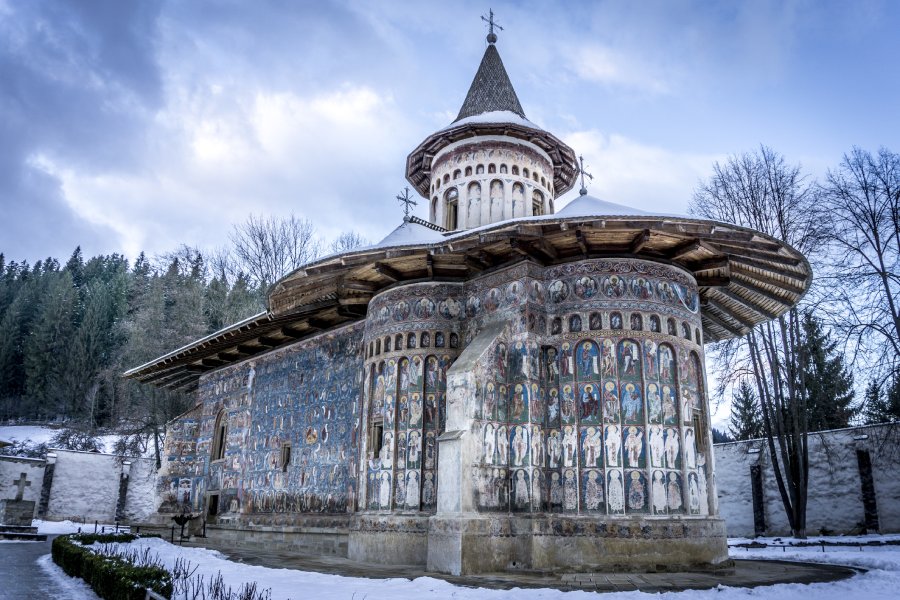
The painted monasteries in northeastern Romania are among the most picturesque tourist attractions in the whole country. Built between the 15th and 16th centuries, their exterior walls are covered with frescoes representing the life of Jesus, the lives of the saints and the Orthodox prophets, and images of hell and heaven in a superb Byzantine style unmistakable.
The Voronet Monastery is undoubtedly one of the most beautiful monasteries in the whole of Eastern and Central Europe, a place of worship for the culture, tradition and Orthodox customs of this area. Called by many as the Sistine Chapel of the East, the monastery is covered in frescoes whose dominance is intense blue, known all over the world as “Blue Voronet”, the hue whose exact way of getting remains a mystery today, more than half century building.
Voronet Monastery is not only appreciated in the country but by tourists from all over the world, some stories about buying deals from the Americans offers that in the interwar period far exceeded the country’s budget for a year. The monastery would have been moved across the ocean if the fair were accepted.
What is extremely interesting for Voronet’s frescoes is that among the pictures of Orthodox saints, there are also portraits of Greek philosophers such as Aristotle and Plato.
Moldovita Monastery
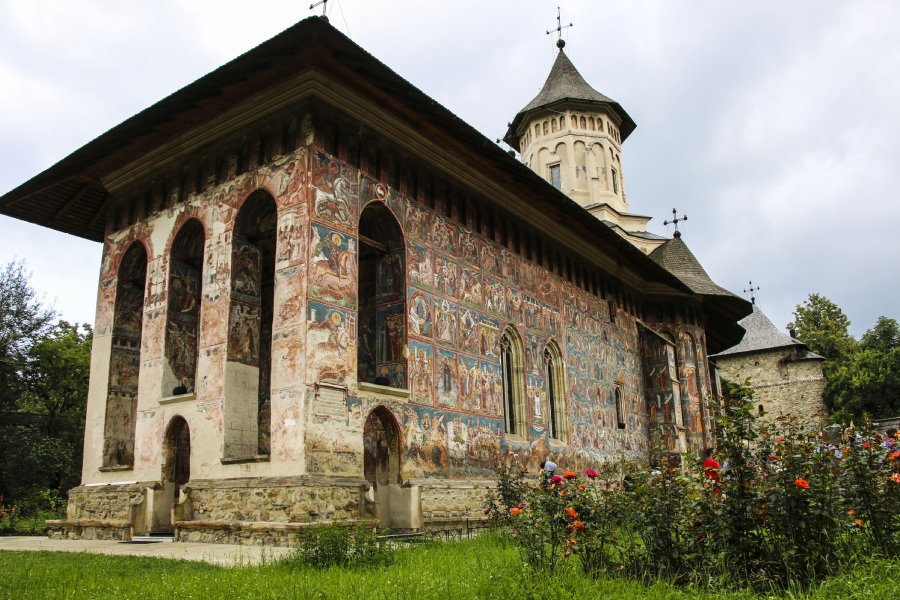
The Moldovita Monastery, built by Petru Rares in 1532 and painted in 1537, is a new establishment in the place – or, more precisely, in the vicinity – of another old, ruined.
About the date when the first building was built, we do not know anything precisely. Instead, there are more certain stories about the construction of the stone monument at the beginning of the reign of Alexander the Good, whose ruins are still visible today.
As a certainty we have the fact that, in 1410, Moldovita Monastery exists, because Alexandru cel Bun surrounds the domain, calling it “the new mason”.
At that time, the construction of the monastery at the foot of the mountains between Transylvania and Moldavia must have aimed at the surveillance of the border area, in the document of 1411, which establishes the border of the Moldovita village, a parade of the “fortress” is mentioned, and the researchers found, not far from the monastery, traces of masonry and a coat of war, which attest to the existence of a fortification in this area.
In connection with this role of the monastery’s watch, a local tradition was also preserved, after which the abbot was also the head of a military organization in which all the villages of rays from the valley of the river entered. It is not yet known how much this legend corresponds to reality at that time.
Sucevita Monastery
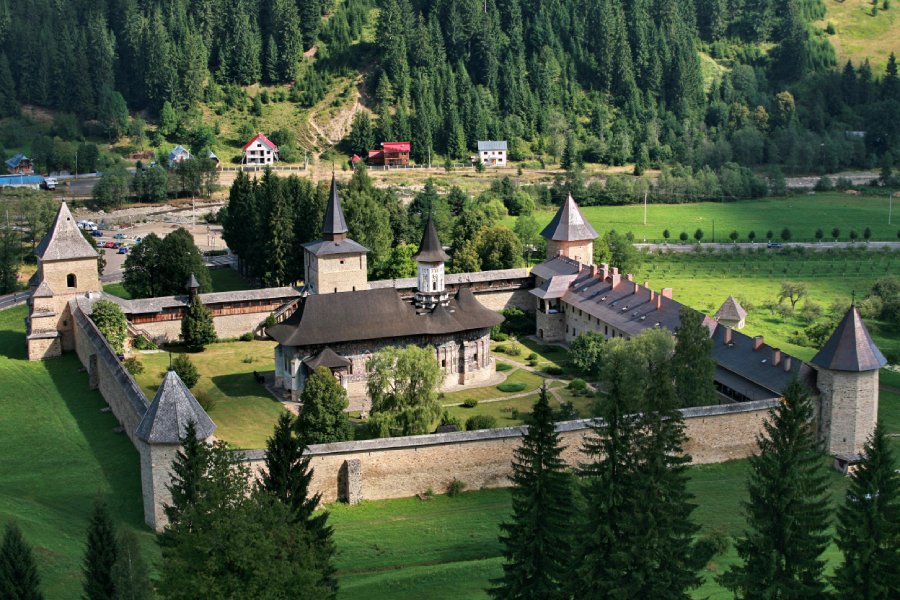
The Sucevita Monastery was built in the last decades of the 16th century, with the expense of the Movila boyar family. The tradition is situated on the valley of the Sucevita River, between the hills, a wooden church and a cemetery from the beginning of the 16th century.
The first hermits on the valley of the Sucevita stream were disciples of St. Daniil the Solitary. These hermits were needed under Mount Obcina Mare, where later they made a small wooden church with the patronage “Change to the Face”. The place is still called “the hermits” today.
At the beginning of the sixteenth century, we meet here Calistrat Sihastrul, another disciple of St. Daniil of Voronet. This great isihast has gathered around or more disciples and renewed the first hermit, known in tradition as “Calistrat’s Sihastria”, transformed towards the end of the 16th century into the current Sucevita Monastery.
Marginea Commune And The Black Ceramic Complex
In the northern part of Suceava County is Marginea commune, it seems to be the largest commune in the county. It has been known nationally and internationally through the renowned Black Ceramics by Marginea, but also by the traditions and customs that have been preserved and transmitted to this day.
This Marginea pottery is obtained by a prehistoric burning technique. Historians have determined that this craft has had a great development around the year 1500, as it appears more as a necessity for the inhabitants to make dishes for food preparation and storage. It was a simple job, having all the practical conditions of this craft, clay, water, and the fire was and are the magic elements.
In the early days, the dishes were burned in 1.5-meter pits that had the shape of a cone upside down, a pit that communicated through a channel with a smaller one in which the fire was made. In our times, the burning of vessels is done in closed ovens the top and at the fireplaces. Oxygen-free burning gives the black/gray color of the vessels. After cooling down, they are polished with a special stone, so the traces of ash still burned to mix with the black of the pot.
This pottery of Marginea has become known throughout the world, and it is also a testimony of the Dacian origins.
Going through Bucovina make a stop at the ceramic complex, where there is also a small ethnographic museum arranged in a cottage for over 100 years. From there you can buy ceramic objects and popular costumes from Bucovina-Rădăuţi area. Or have you already traveled through these places, did you buy ceramic objects from Marginea? Do you use them as decor or use them in household use, how do you feel compared to other ceramic objects?
Traditional Food In Maramures
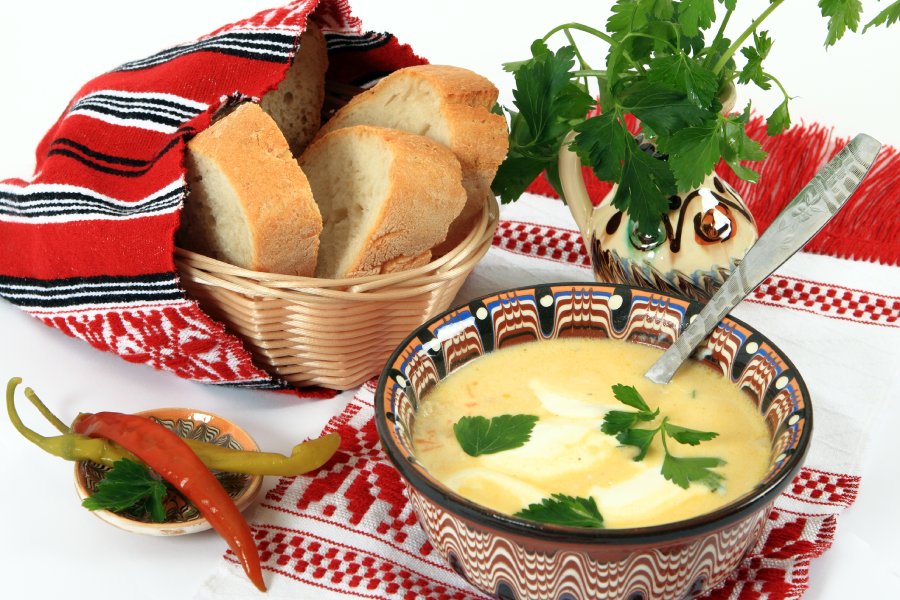
From the culinary point of view, Maramures has certain peculiarities. There is no house in Maramures where you have not invited to the table to taste the little that is in every house.
The cuisine in Maramures is a melange of delicious Romanian, Saxon, and Hungarian ancestors. According to the information provided by the Maramures County Council, nowhere will you find such great diversity, from the soups (soups and soups) to the steaks, paprika, balmos and gomboti (plum dumplings).
For Maramures, mass is a cultural act, with social valences, based on ancient customs. The guest must consume all the food and drinks he is served with, otherwise, he thinks he wants the host so bad as he leaves it in the bottle or the glass.
The core of the culinary tradition is the mobile pastoral dairy, which is installed in summer in the mountains during the grazing of sheep flocks. Maramures prefer a consistent meal (breakfast with cheese, sour milk, bacon, and egg-egg) in the morning food (breakfast). The small snack is taken from 9.00-10.00, and the big snack is from 12.00-14.00. Ujina is scheduled around 18.00 and evening – dinner.
Tourists who choose to visit Maramures must know first of all that the marauding lurks his foreign guest in the house, thinking that “he would be hungry after all the way.”
Neamt City
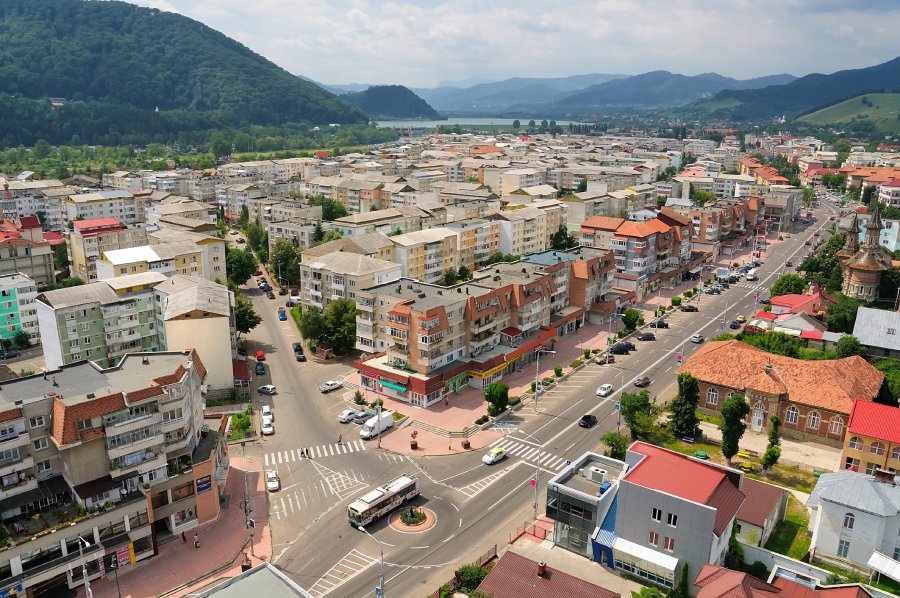
Piatra Neamt is located in the historical region of Moldova and is considered to be one of the most picturesque cities in Romania due to its privileged location in the Eastern Carpathians. The city is surrounded by five mountains, giving it all the advantages of a unique environment. The earliest traces of civilization date back to the Stone Age.
The famous Cucuteni culture (3600-2600 BC) has been certified in the area through a remarkable number of archaeological sites and excavations. Along with the city, the ruins of an ancient Dacian settlement called Petrodava were discovered. Piatra Neamt is the scene of many cultural events, including the International Theater Festival, which takes place in spring, the classical musical music event that takes place during the summer, and many other folkloric festivals throughout the year.
Bicaz Canyon
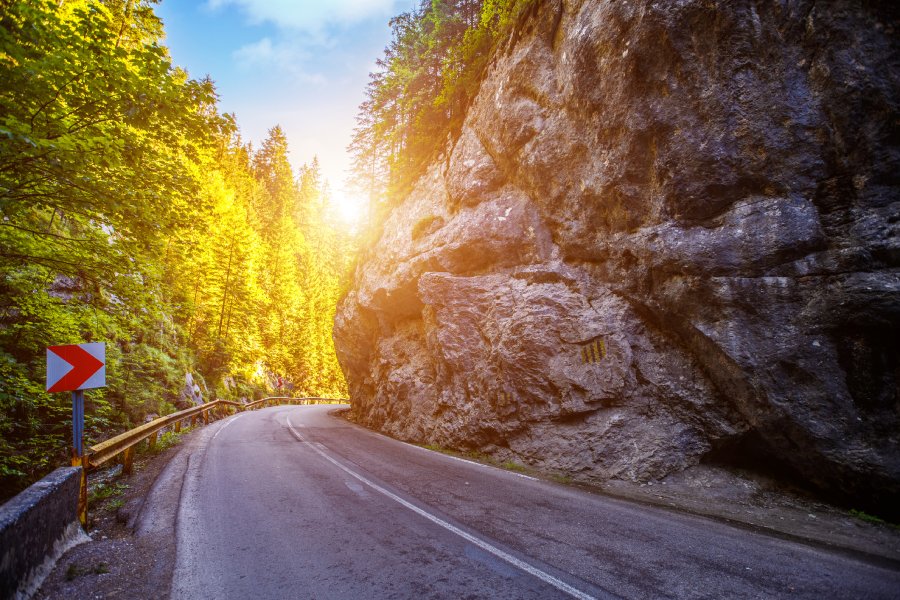
Bicaz Gorges is a very picturesque geographical area in Romania located in the central part of the Hasmaa Mountains, in the northeastern part of the country, in the counties of Neamt and Harghita.
It is only 20 km away from Bicaz.
It is delimited north and northwest of Suhardul Mare and southeast of Suhardul Mic.
Bicaz Gorges have formed due to the erosion caused by the Bicaz River and its tributaries and stretch for an 8 km distance, between the Red Lake and the Transylvanian Bicaz.
These keys connect Transylvania to Moldova and are located more precisely in the central part of the Hasmas Mountains.
It is part of Bicazului National Park – Hasmas, which has as protected areas: Red Lake, Bicaz Gorges, Suga Lake, Hasmaaul Mare – Lonely Stone and Black Hasmaaul.
The National Park of which these Keys are part has an area of 6675 ha and is the most important geological area in our country.
Harghita
Located in the center of Romania, in the eastern part of the Transylvania region, Harghita County is one of the three counties that make up the sub-region of Szeklerland. It has a county residence in Miercurea Ciuc and it is enclosed by Neamţ, Bacau, Covasna, Braşov and Mureş counties.
With 3 types of relief (mountain, hill, and depression), Harghita succeeds to stand out through several sights worth visiting.
The Red Lake
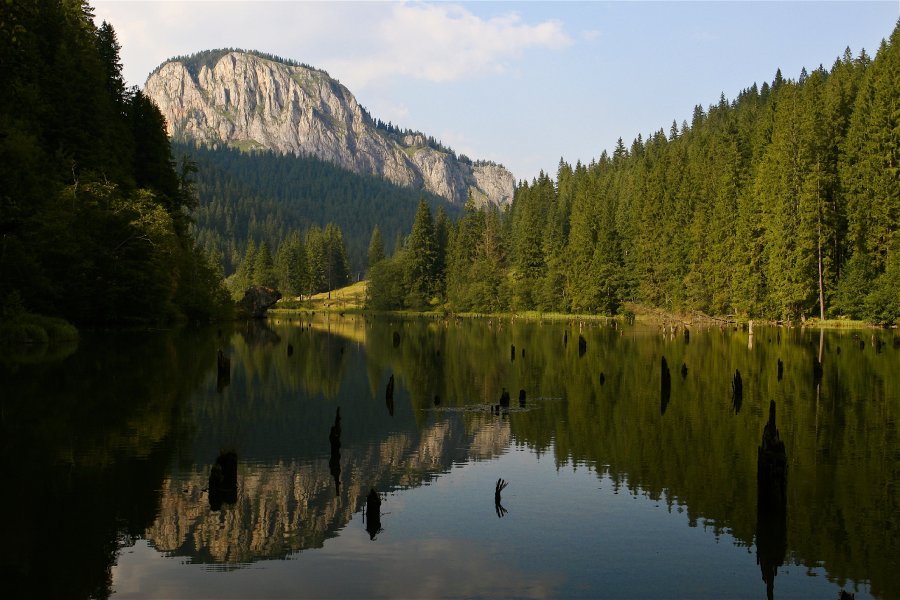
The Red Lake, known by the locals as Lake Ghilcoş, is a naturally accumulated reservoir lake at the foot of the Hăşmaşul Mare mountain. It had, on the last measurements, a perimeter of 2,830 m. It was formed after the collapse of a mountain peak in 1837 or 1838 (although it is a young lake, the year of its formation is unclear).
After the valley was blocked by a landslide, the fir forest was flooded, and over time, the trees were petrified. The Red Lake is the largest natural mountain lake in Romania and is a favorite place for recreation tourists. From here, visitors can adventure on various tourist trails or take a boat ride on the lake.
One of the legends says there was a poor girl in the area, adopted by the mercy of an old lady and a very rich boy, alone to his parents.
The two fell in love at first glance, but the boy’s parents did not agree with the marriage. Neither the prayers nor the tears of the lovers could persuade him. Young people have decided to flee to the world, and the boy’s parents have gone mad with anger. They cursed the girl without thinking that his son would become a victim.
On their way across the mountain, young people were trapped by a storm and sheltered at the foot of the massif. A giant rock had rolled down the valley and killed them. It is said that the two of them blew into the lake and that’s why it’s red.
Brasov And Historical Center
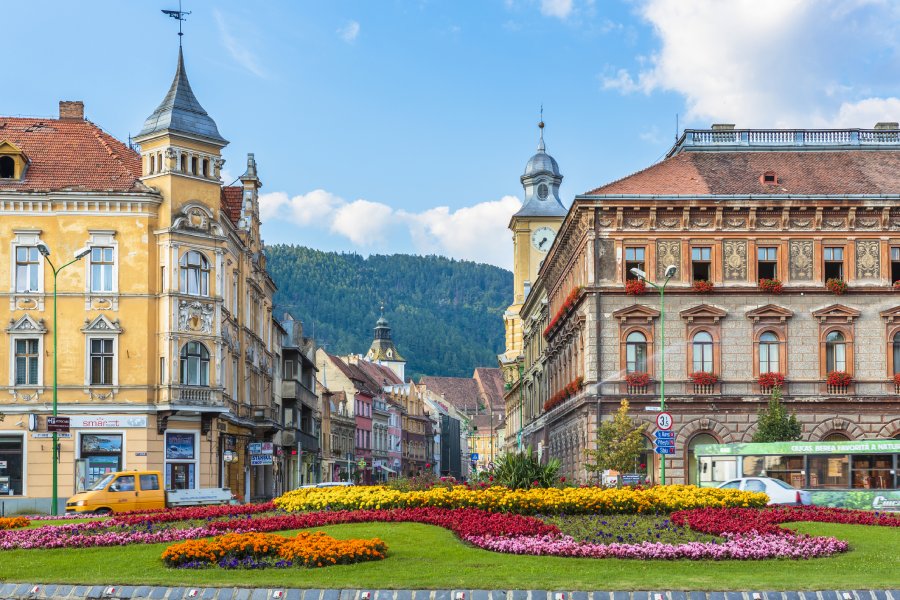
The old center of Brasov is an important attraction for tourists who are passing through the city under the foot of Tampei. Some of the main tourist attractions are: The Council Square and the old buildings, dating back to the 15th century, the Straja Cetatuia and the Black Church. In the old center of Brasov, there are often organized artistic, cultural and commercial events.
The Old Town of Brasov is an irresistible attraction for tourists who visit or are crossing the beautiful city at the foot of Tampei.
Bran Castle
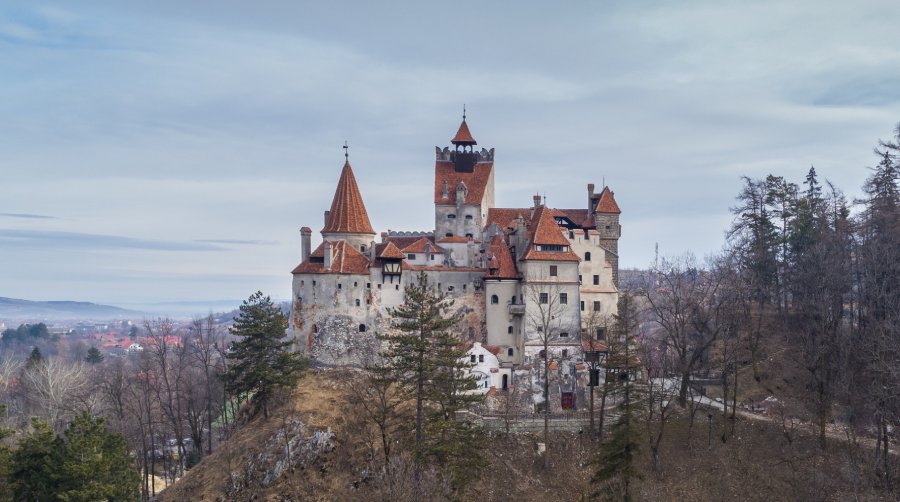
420 kilometers from Chisinau, on the border between the Romanian provinces of Transylvania and Muntenia, on the top of a cliff, we meet the silhouette of one of the most famous fortifications in the world.
The Dracula’s Castle, built here more than 600 years ago, keeps and conveys to the visitor something of the pride of the knights who have travelled the threshold in his time.
In 1920 Brasov City Council donated the Bran Castle to the Queen Mary of Romania in gratitude for its contribution to the Great Union on 1 December 1918.
The Queen restore the Bran Castle and left her inheritance to her daughter, Princess Ileana, the sister of King Carol II century. Bran Castle became the property of the Romanian state, being abandoned and devastated, after the expulsion of the royal family from the country, in 1948
The Dracula’s Castle was then reopened to people in 1956, being partly arranged as a museum of history and feudal art. The Castle entered the restoration in 1987, a work largely finished in 1993.
Sinaia, A Great Place To Visit
Sinaia is one of the most important tourists and spa resorts in Romania. Also called the Pearl of the Carpathians due to the beautiful landscapes and the special conditions of leisure and treatment, Sinaia awaits visitors of all ages in all seasons of the year.
Sinaia is guarded, like a fortress, by the Bucegi Mountains, reaching impressive heights of over 2,400 m. Piatra Soimului Complex is situated at the foot of the Baiului Mountains, which has a long peak of over 30 km and heights of 1700-1900 m.
The most important wildlife found in the surroundings of the Sinaia is the deer, the bear, the deer, the black goat, the boar, the wolf, the fox, and the laughter. The trout enjoys a good living environment in the crystalline waters of the area, and the locusts, the gallop, the snout, the bald eagle and the rooster are some of the birds specific to the area.
Peles Castle
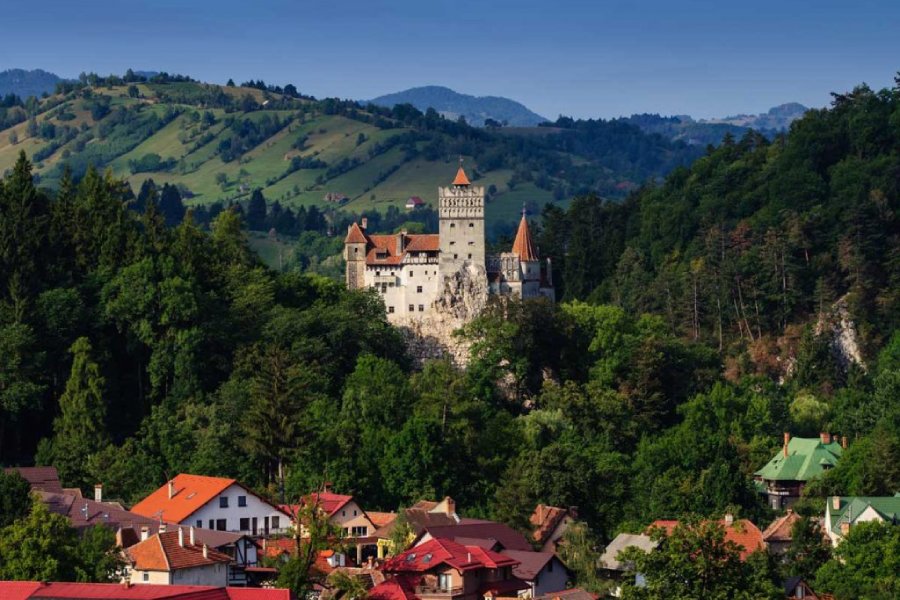
Peles Castle is located in a fairytale place in the Prahova Valley and is considered to be one of the most beautiful castles in Romania, but also on the old continent.
In the heart of Romania, tourists can admire an objective that seems to be unmistakable. This is the Peles Castle, which attracts like a magnet hikers from all corners of the world, enchanted by its beauty. Peles Castle is located in Sinaia mountain resort and represents the summer residence of King Carol I.
Peles Castle was declared a museum in 1953. The Manor House is the most visited museum in Romania. Some 300,000 tourists cross the threshold of the monument, curious to admire this place entirely from the Carpathian Mountains.
In total, Peles Castle has approximately 170 rooms and over 30 bathrooms, but only 35% of its area can be visited. The rooms and rooms that you should not miss if you arrive in Peles Castle include the hall of honor, the reception hall, the mirror room, the great gun room, the concert hall, the imperial apartment, the Maura Hall, the Turkish saloon or the hall theater.
Also, rare books with gold-engraved covers in the Royal Library impress the tourists, and there is also a secret door behind a bookshelf.
In conclusion, are a lot of places to visit in Romania where you can learn a lot about the history of Romania and his traditions. Visit Danube Delta or Medieval Transylvania or Dracula’s Castle or if you like the beach go to Black Sea.